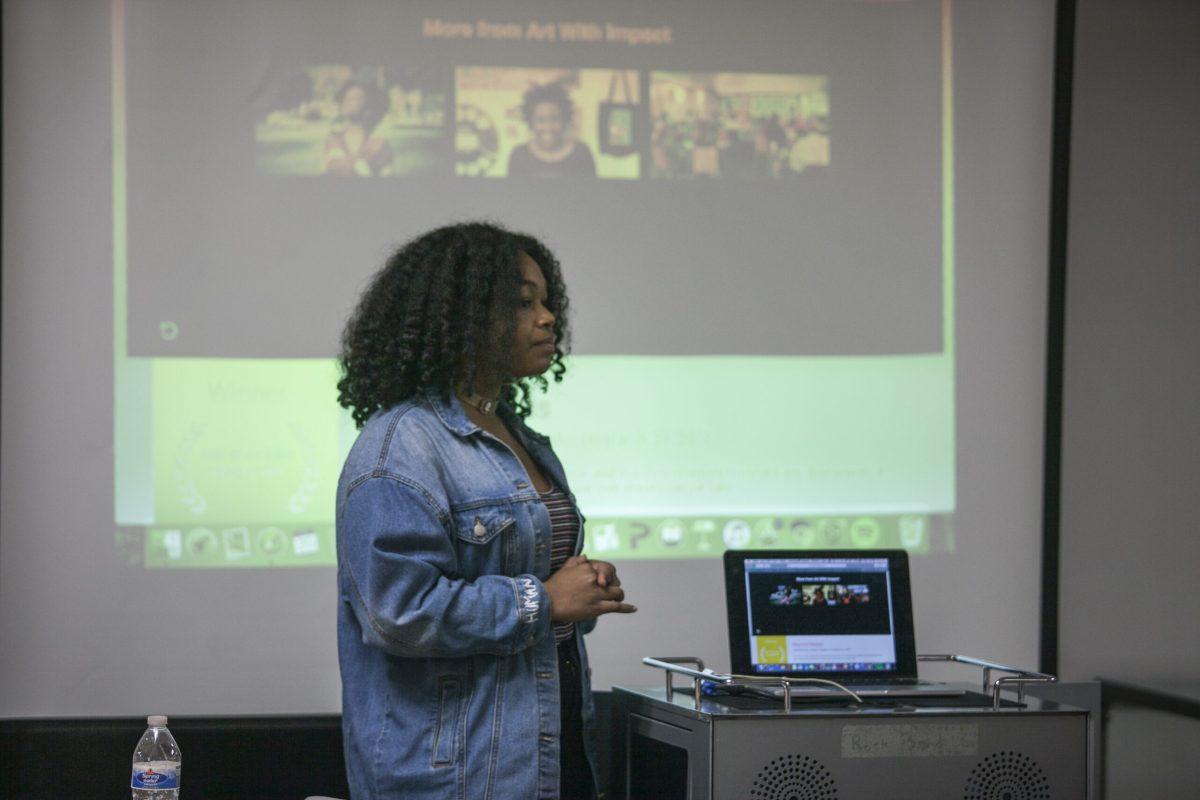The presentation “Art With Impact: Mental Health in the Black Community” was held in the Chamberlain Student Center on Tuesday by Healthy Campus Initiatives and a nonprofit group called Art with Impact.
Iniah Corbitt, a senior psychology major, led the discussion on the topic of mental health after showing three videos about mental health in the black community. She has been an intern at Healthy Campus Initiatives since September, which she feels has helped prepare her to talk about this topic.
https://twitter.com/Dylanwith2Ns/status/966024552022192128
“I think there is a lack of people who are educated on this topic and I feel like I’m one of the ones, I’m not a licensed health professional, but I feel like I have enough insight on the topic to discuss it and to let people know the proper steps to take to educate people,” Corbitt said.
“Art With Impact: Mental Health in the Black Community” also contained an open discussion. “Art with Impact” focuses on films that have to do with mental health, which is where Corbitt found the three videos that were shown in the beginning of the presentation. Following the videos, the audience was asked to open up about their experiences with mental health issues.
Dr. Kha Sadler, assistant director in the Achieving Success through Collaboration, Engagement, and Determination (ASCEND) office and a mental health physician at the Wellness Center, aided in the discussion. Sadler came to support Corbitt, who is one of her ASCEND students, and to gauge student reactions during a discussion of this kind, since this topic falls under her area of research.

The program touched on several key points, such as stigmatization around mental health issues being a reason why students of color may feel hesitant to seek help concerning them. The final video, “Beyond Words,” highlighted the platitudes people with mental health issues, especially those in the black community, have to hear. Different messages like “just drink more water,” “when did you last pray” and “real men don’t cry” appeared on the screen during the short black and white video.
“I definitely would have liked to see more students of color present and I think, in my mind, the lack of presence could be interpreted in different ways,” Sandler said. “Whether that’s class schedule, whether that’s not knowing much about it, or it could be the very fact of what we’re talking about – the subject matter of mental health and it not being talked about by students of color. So just the mere absence could speak to the avoidance of the issue in and of itself.”
https://twitter.com/Dylanwith2Ns/status/966021069130878976
On the other hand, she was happy people of other groups and races came out for the presentation. She felt that it was “advantageous for other racial groups to see what some of the challenges are that the black community faces from a mental health perspective.”
The three videos and group discussion lasted about 45 minutes and drew a mix of people. There were sheets in the back of the room to fill out before and after the presentation to gauge how much people learned from the event and to see if it helped inform them. The end of the presentation gave options for getting help, such as the Wellness Center, National Suicide Hotline and Public Safety.
“I hope that people become more educated and become more willing to talk about [mental health],” Corbitt said. “Maybe this will become an every-year, annual thing at Rowan University or something that I take with me once I graduate.”
For questions/comments about this story, email [email protected] or tweet @thewhitonline.

























































































































































!["Working with [Dr. Lynch] is always a learning experience for me. She is a treasure,” said Thomas. - Staff Writer / Kacie Scibilia](https://thewhitonline.com/wp-content/uploads/2025/04/choir-1-1200x694.jpg)









































